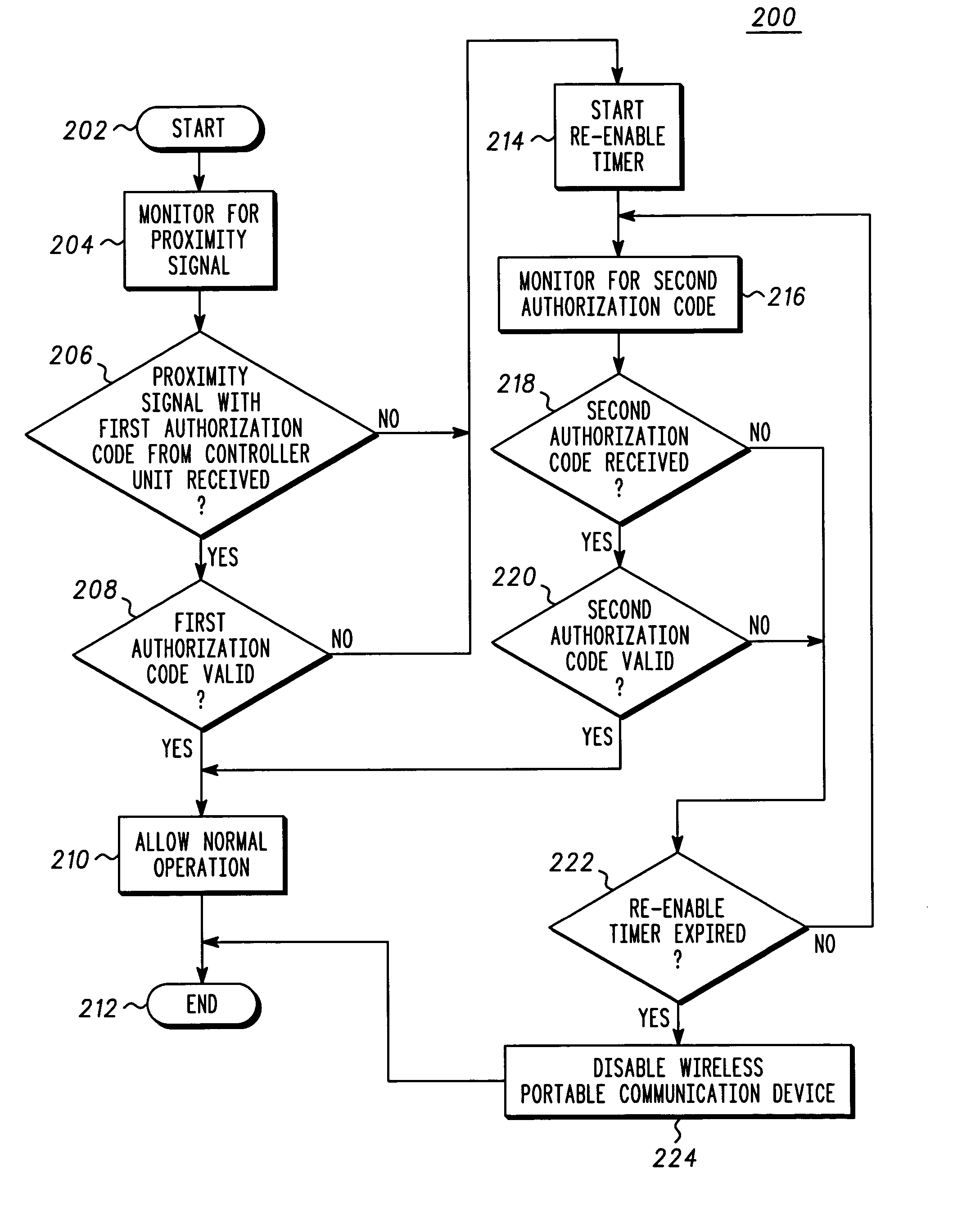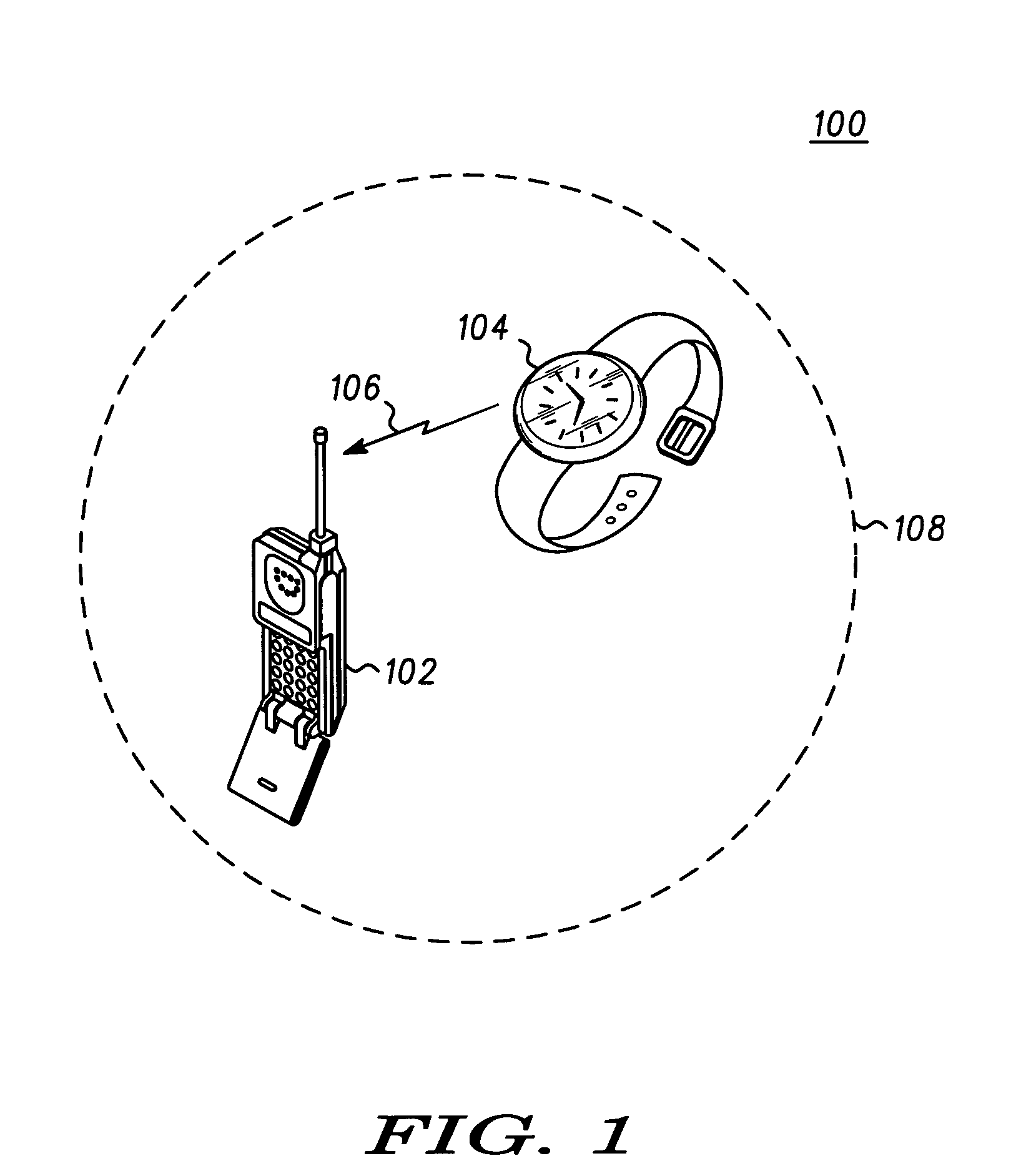Method and apparatus for enabling a device by proximity
a technology of proximity and proximity sensors, applied in the direction of electrical equipment, network data management, security arrangements, etc., can solve the problems of devices that have been stolen or recovered, devices that can be abused or inappropriately accessed, and devices, services and information associated with these devices, to achieve the effect of facilitating the proximity of devices
- Summary
- Abstract
- Description
- Claims
- Application Information
AI Technical Summary
Problems solved by technology
Method used
Image
Examples
first embodiment
[0011]FIG. 2 illustrates an exemplary flowchart 200 of a process of a first embodiment according to the present invention describing a method for enabling or disabling the wireless portable communication device 102 based upon the proximity signal 106 transmitted from the controller unit 104 shown in FIG. 1. The process begins in block 202. The wireless portable communication device 102 may initiate the process by requesting the controller unit 104 to transmit an authorization code, which allows normal operation of the wireless portable communication device 102, to the wireless communication device 102. The request may be a result of a user initiating a call or an incoming call to the wireless portable communication device 102. Alternatively, the controller unit 104 may continuously transmit the authorization code.
[0012] In block 204, the wireless portable communication device 102 begins to monitor for the proximity signal 106 transmitted from the controller unit 104. The wireless po...
second embodiment
[0021]FIG. 6 is an exemplary block diagram 600 of a second embodiment in accordance with the present invention describing an apparatus for the wireless portable communication device 102. The wireless portable communication device 102 is configured to be enabled or disabled based upon proximity to the controller unit 104, and comprises the following components. A proximity signal monitor 602, which includes a receiver module 604, is configured to monitor and to receive the proximity signal 106, which includes the first authorization code and is transmitted from the controller unit 104, within a predetermined monitoring time period. The receiver module 604 may contain a single receiver configured to receive both the proximity signal 106 and radio frequency communication signals during normal operation. Alternatively, the receiver module 604 may contain separate receivers with one receiver for receiving the proximity signal 106 and another receiver for receiving radio frequency communi...
PUM
 Login to View More
Login to View More Abstract
Description
Claims
Application Information
 Login to View More
Login to View More - R&D
- Intellectual Property
- Life Sciences
- Materials
- Tech Scout
- Unparalleled Data Quality
- Higher Quality Content
- 60% Fewer Hallucinations
Browse by: Latest US Patents, China's latest patents, Technical Efficacy Thesaurus, Application Domain, Technology Topic, Popular Technical Reports.
© 2025 PatSnap. All rights reserved.Legal|Privacy policy|Modern Slavery Act Transparency Statement|Sitemap|About US| Contact US: help@patsnap.com



